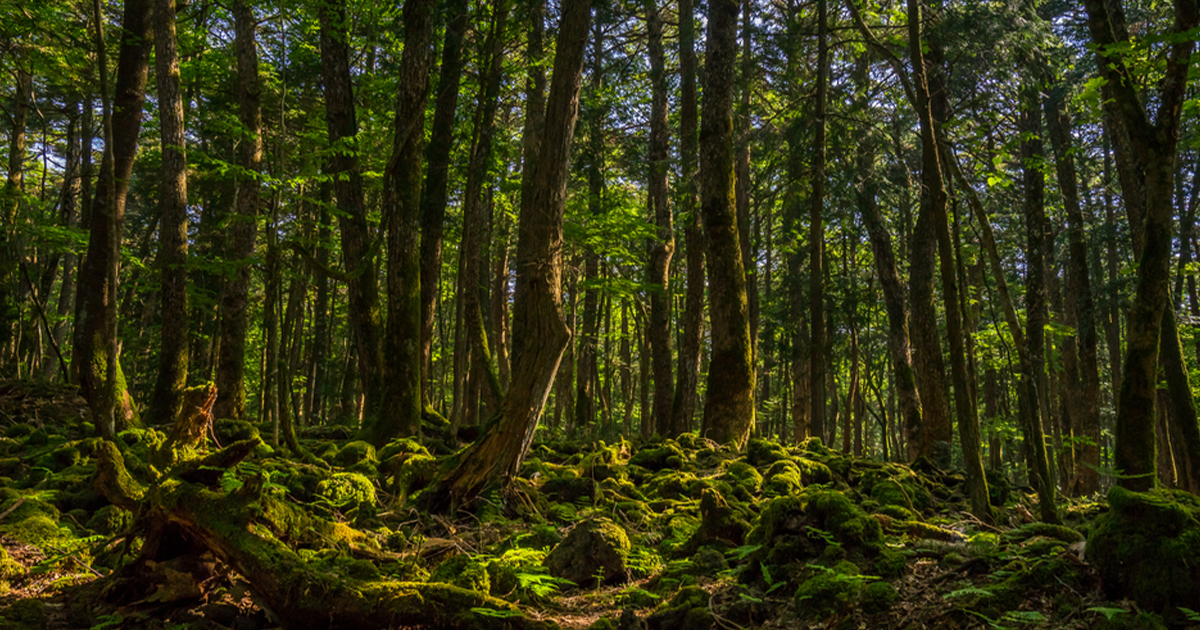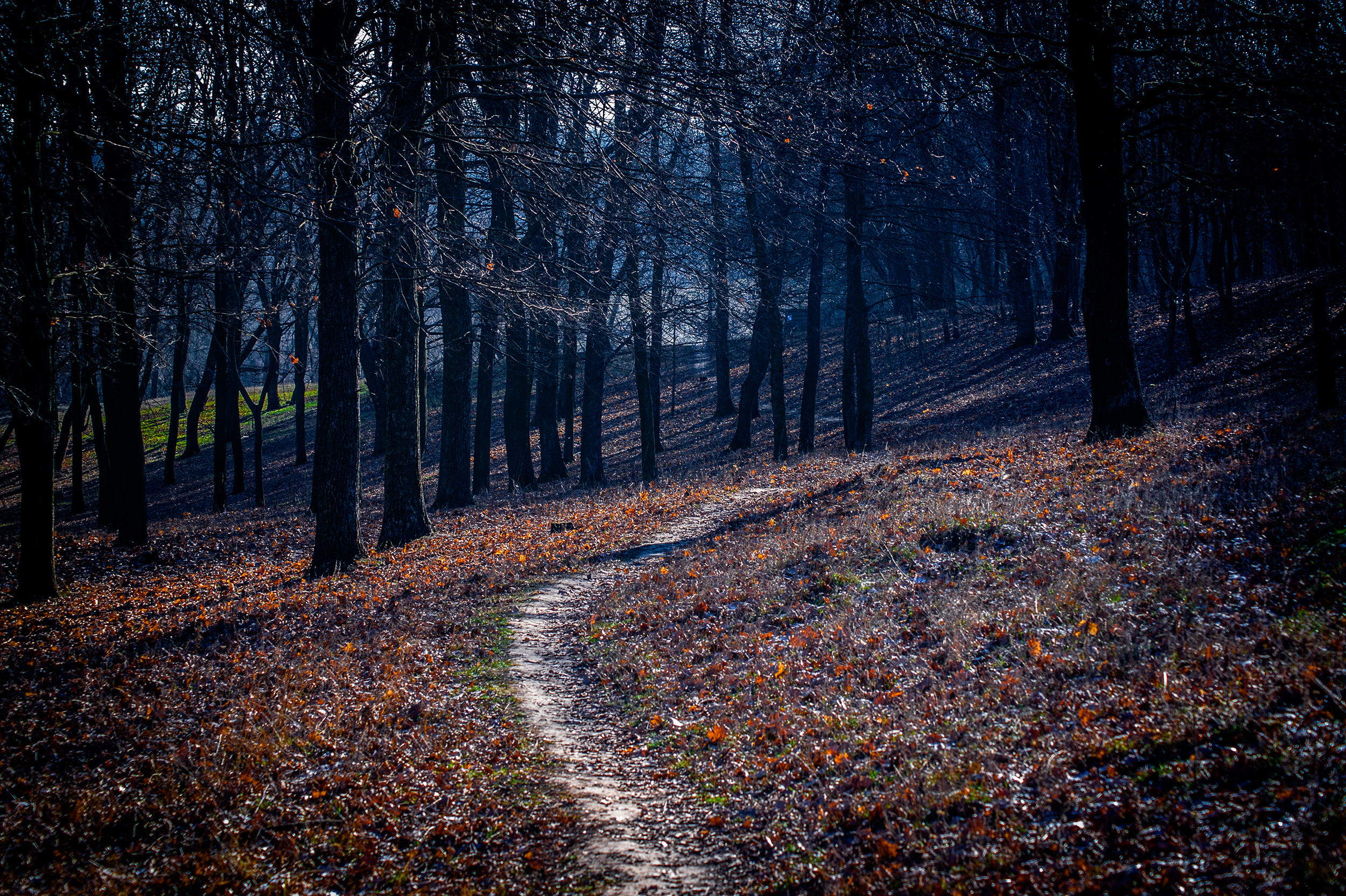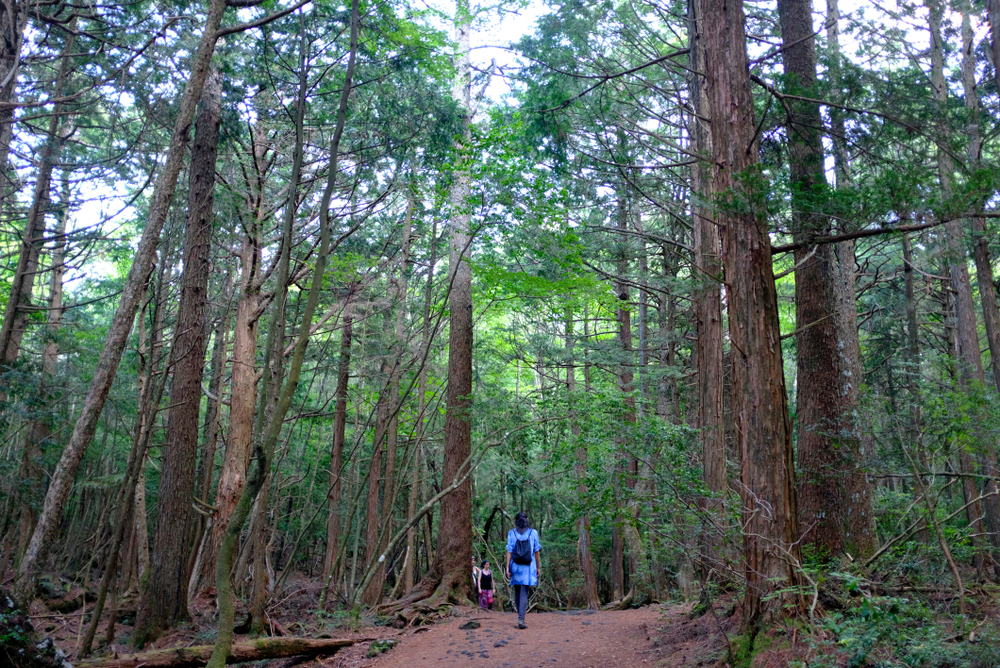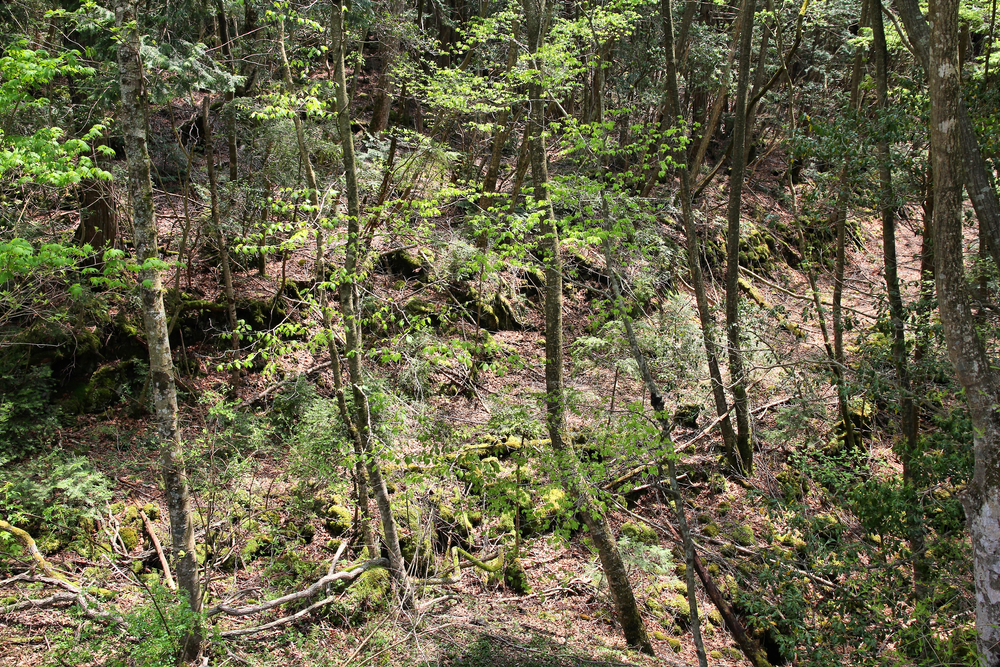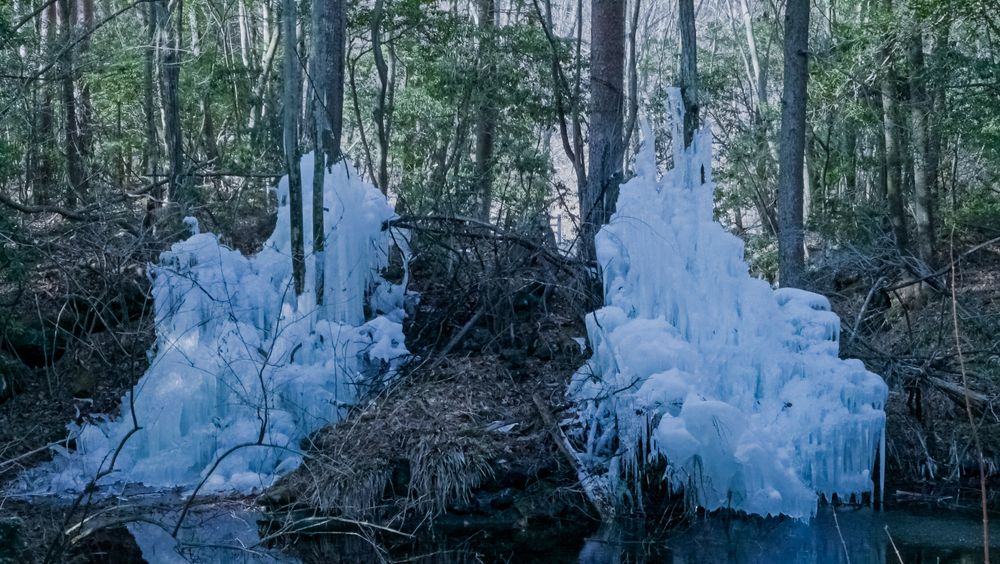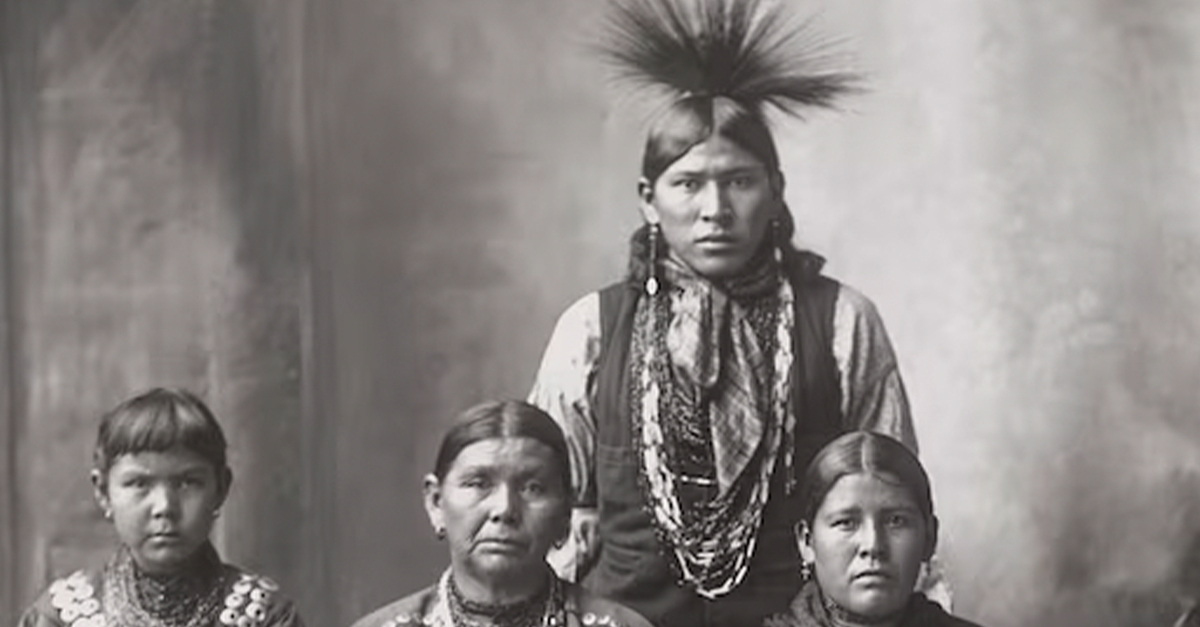The Aokigahara Forest
The Aokigahara Forest is a wooded area so thick of foliage that it is often considered the “Sea of Trees.” But that’s not all this forest is known for, in fact it has a rather grim reputation.

Location
The Aokigahara Forest is located northwest of Mount Fuji, on the island of Honshu in Japan.
Size
It spans across 13.5 square miles of thick forest, with several trails leading to caves and lakes. Though not very big, it feels larger, and more remote than it actually is due to its rugged terrain.
The rugged terrain and thick forest are what makes it appealing to people with a specific, dark goal in mind.
Reputation
Many visitors have chosen the Aokigahara Forest as the setting for their final moments, walking into the deepest parts of the forest with no intentions on coming back out.
This happens more than anyone would like to admit.
Loss of Life
Intentional losses of life happen so often in the Aokigahara Forest that the area now has the second-highest rate of people ending their own lives, after the Golden Gate Bridge in San Francisco.
Statistics
It is estimated that between 30 to 100 people each year take their own lives in the Aokigahara Forest.
However, current numbers are no longer made public as the Japanese government fear it might encourage further losses.
Traditional Japanese Rituals
Self-inflicted loss doesn’t have the same stigma in Japan that it does in other areas of the world. The practice of seppuku is an honorable way to take your own life, and it dates back to Japan’s feudal era.
Although it is not widely practiced today, Japan still struggles with a high rate of loss.
Japan’s Statistics
Japan experienced a financial crisis in 2008 that lead to a significant increase in people taking their own lives. And while numbers changed over the years, the numbers have been recently rising.
2022 Statistics
In 2022, the self-inflicted loss of life rates increased by 2.7 percent, making it one of the leading causes of loss for men between the ages of 20-44, and women between the ages of 15-34.
The Government’s Intervention
The Japanese government announced plans in 2017 to reduce the loss of life rates by 30 percent over the next decade.
They’re doing this by starting with Aokigahara forest specifically.
 b-hide the scene, Shutterstock
b-hide the scene, Shutterstock
Safety Measures
In hopes of preventing further loss, the government has now posted security cameras at the forest’s entrance, increasing patrol in the area, and posting various signs throughout the forest with specific messages.
 Liz Mc, CC BY 2.0 , Wikimedia Commons
Liz Mc, CC BY 2.0 , Wikimedia Commons
Safety Signs
Some of the safety signs along forest trails read things like: “Think carefully about your children, your family,” and “Your life is a precious gift from your parents.”
But there’s one thing they can’t change in the forest that would help if they could.
The Heights
According to Mental Floss, the second most common method of taking your own life in Japan is by hanging. So much so that the government has actually increased the height of certain bridge railings to curb further attempts.
But this can’t be done in the Aokigahara forest. So, what is it about this forest that makes people want to do this?
 Big Ben, CC BY-SA 2.0, Wikimedia Commons
Big Ben, CC BY-SA 2.0, Wikimedia Commons
A Spooky Setting
The forest is filled with creepy looking trees that twist and turn and have roots sticking up out of the ground along trails. The ground is uneven, rocky, and filled with caves.
All of this contributes to what makes this forest specifically preferred by those looking to end their lives.
A Difficult Discovery
Aside from tight tree lines and sparce wildlife, it is believed that this location is preferred as it may be difficult to discover and recover bodies.
But that’s not the only reason.
A Grim History
For many years, the Japanese culture have believed the forest to contain yūrei—mythological Japanese ghosts filled with anger and vengefulness.
This belief has led to several intriguing reports from visitors
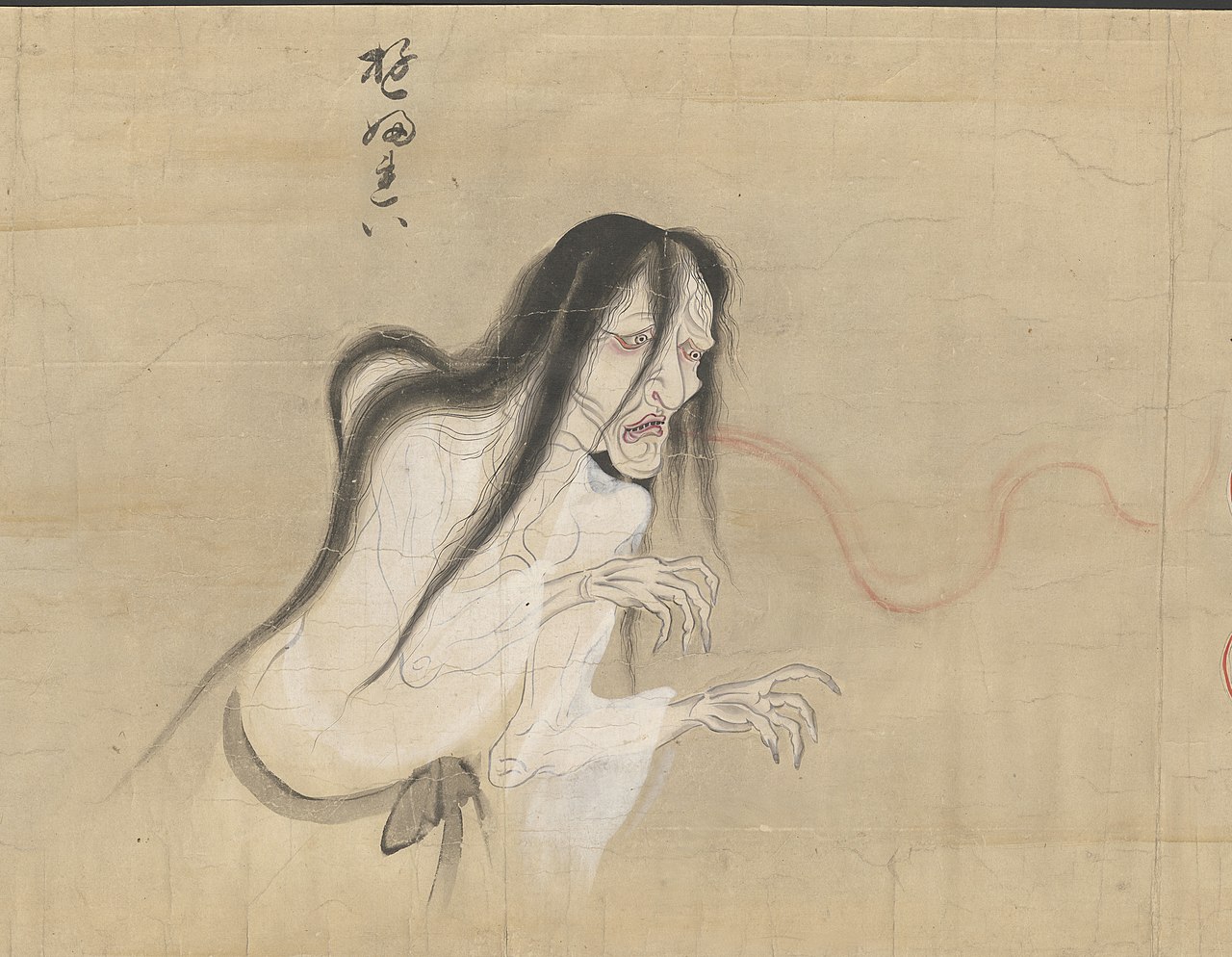 Brigham Young University, CC BY-SA 4.0, Wikimedia Commons
Brigham Young University, CC BY-SA 4.0, Wikimedia Commons
Strange Phenomena
Some visitors have reported strange phenomena, like compasses breaking, as well as GPS devices and smartphones no longer working while within the boundaries of the forest.
There is also another possible connection to the forest that stems from traditional Japanese culture.
The Practice of Ubasute
It’s possible that this practice is nothing more than a product of folklore, but either way, it adds an interesting perspective.
Ubasute was an apparent practice in Japan that occurred during times of famine.
Ubasute Explained
Roughly translating to “abandoning an old woman”, ubasute involved decreasing the number of mouths to feed by leading elderly relatives to a remote environment to pass from dehydration, starvation, or exposure.
Given all of these intriguing practices, it makes sense that the Japanese people consider the forest to be haunted.
A Haunted Forest
It is now believed that the spirits of those who have taken their own lives within the Aokigahara forest still linger in the woods.
Folklore claims they are vengeful, dedicated to tormenting visitors and luring those who are sad and lost off the paths.
Annual Searches
Annual searches for the lost have been held in Aokigahara since 1970. Volunteers patrol the area and recover the remains.
Authorities and volunteers trek through the challenging terrain and personally carry the bodies out to be properly buried.
Search Recoveries
In the early 2000s, 70 to 100 people’s remains were uncovered each year.
As mentioned before, the Japanese government no longer publicizes this information—especially amid controversies surrounding the forest.
Controversy
In 2017, American YouTuber Logan Paul shared a controversial video of his experience in the Aokigahara forest, where he recorded himself and his friends as they walked through the forest, and discovered an unalive body.
Logan Paul’s Video
Logan Paul’s group of friends were initially shocked upon the discovery of the unalive body—which was hanging from a tree.
But their millions of views came with more than the fame they were hoping for.
Paul’s Apology
Logan Paul’s video reached millions of people within a short time frame, and it also attracted thousands of disapproving comments.
Paul formally apologized days later, and since then, people all over the globe are pleading for change.
Pleading for Change
Many people want the forest to be closed off the to public—however that is not as easily done as they may think.
It is also a very popular hiking spot for many visitors who do not have the same dark goal in mind as many people before them.
The Government’s Acknowledgment
The Japanese government acknowledge the controversy, and continue to implement efforts to make it a safer place for all.
But—if we’re honest, the dark history makes the forest more appealing.
Tourism
Today, the forest is open to self-guided visitors, and also offers guided tours for visitors who do not wish to navigate the forest alone.
Cave tours are the most popular. But the entire forest is known for more than just its tragic happenings.
Beauty
Many visitors have reported that the Aokigahara forest is actually quite stunning inside.
Although it is eerily quiet as the wind doesn’t often make it inside the trees, the shades of green with the sun peering through the tops of the trees is a beautiful sight to see.
Final Thoughts
Although the Aokigahara forest is known for something terrible and sad, it is actually one of the most beautiful forests on this Earth and deserves recognition for something positive.

